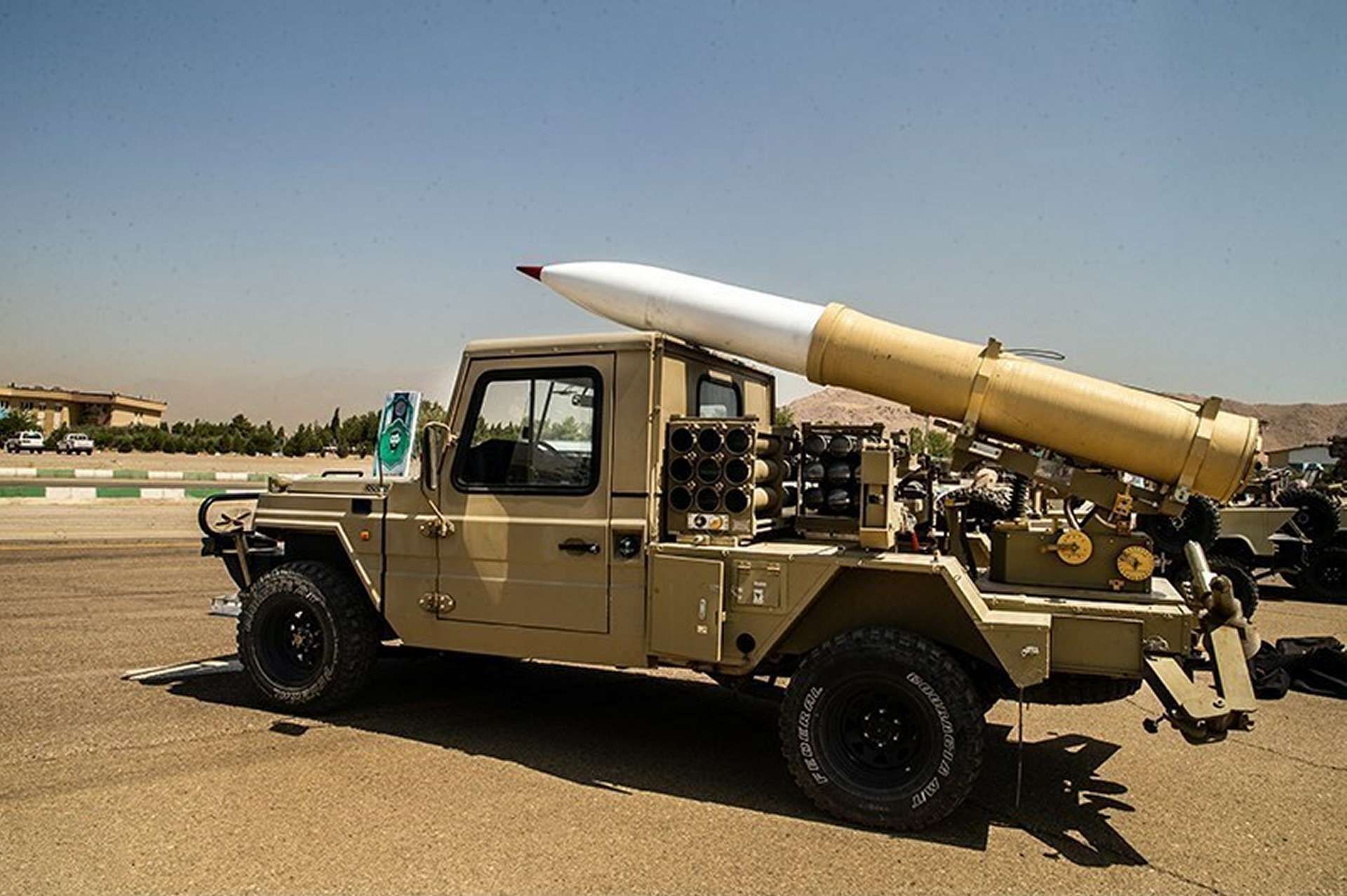Breaking news
Hezbollah's first attack with Iranian-made Falaq-2 333 mm rockets targets Israeli command center.
On June 8, 2024, the Lebanese armed group Hezbollah announced it had fired a salvo of Falaq-2 333 mm rockets at a military command center in northern Israel, marking the first known use of this type of rocket by Hezbollah, which had previously used the Falaq-1 on multiple occasions. The Falaq-2 is produced entirely within Iran, providing advantages such as resistance to jamming, significant destructive power, and an impact fuse with an arming mechanism.
Follow Army Recognition on Google News at this link

The Falaq-2 is produced entirely within Iran, providing advantages such as resistance to jamming, significant destructive power, and an impact fuse with an arming mechanism. (Picture source: Iranian MoD)
The Falaq-2 is an Iranian-made, second-generation unguided 333 mm rocket system developed in the 1990s by Shahid Bagheri Industries, part of the Aerospace Industries Organization. The 333 mm surface-to-surface rocket is launched from a single tube-type launcher mounted on a vehicle chassis, similar to those used for the Shahin-1 and Shahin-2 systems. The Falaq-2 has a maximum range of 10,800 meters and has been previously used in the Syrian civil war.
The Falaq-2 rocket is designed to target military and economic assets, including command centers, forts, fire support centers, traffic lines, communication centers, and naval vessels. The rocket is produced entirely within Iran, providing advantages such as resistance to jamming, significant destructive power, and an impact fuse with an arming mechanism.
In terms of specifications, the Falaq-2 has a fragmentation radius of 300 meters, a maximum speed of 440 meters per second, and a length of 1,823 mm. It has a warhead weight of 137 kg and uses a double-base solid propellant. The rocket is designed for ease of transportation, preparation, and use, compatible with conventional ground and sea equipment, and offers a long shelf life of up to 15 years in standard conditions.
Since the outbreak of the Hamas-Israel war on October 7, 2023, Hezbollah and the Israel Defense Forces (IDF) have engaged in significant cross-border hostilities. Hezbollah's rocket and missile attacks on Israeli positions along the northern border have been met with retaliatory artillery and airstrikes by the IDF targeting Hezbollah positions in southern Lebanon. This cycle of violence has become a regular occurrence, leading to numerous casualties and significant civilian displacement.

The 333 mm Falaq-2 surface-to-surface rocket is launched from a single tube-type launcher mounted on a vehicle chassis, similar to those used for the Shahin-1 and Shahin-2 systems. (Picture source: Wikimedia)
In October 2023, the conflict saw several intense clashes. On October 20, Hezbollah militants infiltrated the border into Shtula, prompting an Israeli airstrike that killed three of them. Other incidents involved missile and rocket attacks from Lebanon into northern Israel, to which the IDF responded with airstrikes and artillery fire. These confrontations have resulted in casualties on both sides and displaced approximately 96,000 Israelis from their homes.
The hostilities have continued into 2024, with Hezbollah sustaining its attacks on Israeli military positions, often in support of Hamas in Gaza. The IDF has carried out counterstrikes targeting Hezbollah operatives and positions in Lebanon. This has been the most severe escalation between the two sides since their 2006 war, causing considerable casualties, including over 80 Hezbollah fighters and multiple civilians on both sides. The ongoing violence has kept the region tense, with both sides preparing for the possibility of further escalation.
On June 3, 2024, Hezbollah launched multiple rocket and drone attacks targeting northern Israel, including the Golan Heights and the town of Hurfeish. These attacks resulted in injuries, substantial property damage, and large fires that burned over 2,400 acres of land. The IDF responded with airstrikes on Hezbollah positions in southern Lebanon, targeting infrastructure and key operatives involved in the group's military operations.
To prepare for potential escalation, the IDF conducted military exercises simulating multi-front conflict scenarios. On June 5, 2024, Israeli Defense Minister Yoav Gallant reviewed the conflict zones, emphasizing the IDF's continued actions against Hezbollah. The IDF also discovered and destroyed tunnels in Gaza used for smuggling and militant activities as part of broader efforts to address threats and enhance regional security. Despite ongoing hostilities, there are indications of possible diplomatic efforts to de-escalate the conflict. However, both sides maintain their military activities, with the IDF ready to proceed with operations to ensure security in northern Israel. The situation remains tense, with frequent exchanges of fire and ongoing military preparations.


























